
HOME
INTRO
SYMBOLS
ALMANAC
ECONOMY
GEOGRAPHY
STATE MAPS
PEOPLE
FORUM
NEWS
COOL SCHOOLS
STATE QUIZ
STATE LINKS
BOOK STORE
MARKETPLACE
NETSTATE.STORE
NETSTATE.MALL
GUESTBOOK
CONTACT US


Tweet
Double click on word for definition.
Georgia State Fossil
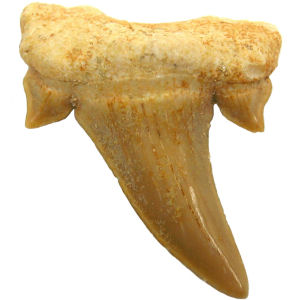
Georgia State Fossil: Shark Tooth
Photograph: Jonathan Zander
Photographs, prints, posters
The shark tooth became the official Georgia state fossil on March 18, 1976 when work was completed on and House Resolution No. 517-1385 was formally adopted.
Sharks continually shed their teeth, and some may shed up to 35,000 teeth in a lifetime.
In some geological formations, Georgia's coastal plain for example, particularly in coastal areas and rivers south of Augusta, Macon and Columbus, shark's teeth are a common fossil.
In addition to an official state fossil, House Resolution No. 517-1385 also designated an official state mineral and an official state gem.
The resolution, shown below offers explanation for the adoption of each of these symbols to represent the State of Georgia.
OFFICIAL STATE MINERAL, FOSSIL AND QUARTZ DESIGNATED.
No. 104 (House Resolution No. 517-1385).
A Resolution.
Designating staurolite as the official State mineral, the shark tooth as the official State fossil and quartz as the official State gem; and for other purposes.
Whereas, Georgia has a wealth of minerals and gemstones; and
Whereas, staurolite is a mineral found in old crystalline rocks and is particularly well known and abundant in north Georgia; and
Whereas, staurolite crystals are known mostly as "Fairy Crosses" or "Fairy Stones", and generations after generations have collected them for good luck charms; and
Whereas, the shark tooth is a relatively common fossil in Georgia and in fossil form can be traced back 375,000,000 years; and
Whereas, the teeth are especially prized by fossil collectors and range in color from the more common blacks and grays to white, brown, blue and reddish brown; and
Whereas, quartz is the second most abundant mineral on Earth, and Georgia is blessed with a great deal of it in a wide variety of colors; and
Whereas, quartz is the amethyst that has been most used in jewelry, and clear quartz when faceted resembles diamond; and
Whereas, the importance of Georgia's minerals to the industrial growth and heritage of this State should be appropriately recognized.
Now, therefore, be it resolved by the General Assembly of Georgia that the following designations are hereby made:
(1) Staurolite is designated as the State of Georgia's official mineral.
(2) The shark tooth is designated as the State of Georgia's official fossil.
(3) Quartz is designated as the State of Georgia's official gem.
Approval Date: Approved March 18, 1976.
Georgia Law
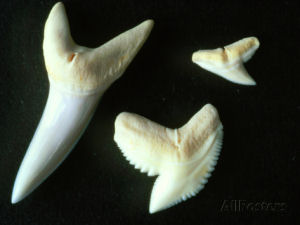
Georgia State Fossil: Shark Tooth
Photographs, prints, posters
The following information was excerpted from the Code of Georgia, Title 50, Chapter 3, Article 3, Section 50-3-56.
TITLE 50. STATE GOVERNMENT
CHAPTER 3. STATE FLAG, SEAL, AND OTHER SYMBOLS
ARTICLE 3. OTHER STATE SYMBOLS
O.C.G.A. § 50-3-56 (2014)
§ 50-3-56. Official fossil
The shark tooth is designated as the official Georgia state fossil.
HISTORY: Ga. L. 1976, p. 567.
Sources...
"ACTS AND RESOLUTIONS OF THE GENERAL ASSEMBLY OF THE STATE OF GEORGIA 1976." GALILEO: Georgia Legislative Documents. Version 1976 Vol. 1 -- Page: 567. N.p., n.d. Web. 17 Aug. 2014. .
"LexisNexis® Custom Solution: Georgia Code Research Tool." LexisNexis® Custom Solution: Georgia Code Research Tool. N.p., n.d. Web. 17 Aug. 2014. .
McPherson, Alan. "Georgia." State Geosymbols: Geological Symbols of the United States. Bloomington, Ind.: Authorhouse, 2011. 39. Print.
Shearer, Benjamin F. and Barbara S. State Names, Seals, Flags and Symbols: A Historical Guide Third Edition, Revised and Expanded. Westport, Conn: Greenwood Press, 3 Sub edition, 2001.
Additional Information
Sharks Teeth: Mid-Georgia Gem and Mineral Society.
State of Georgia: The Fossil Forum.
State fossils: Complete list of official state fossils from NETSTATE.COM
More symbols & emblems: Complete list of official Georgia state symbols from NETSTATE.COM.
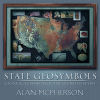
State Geosymbols
Alan McPherson
State Geosymbols: Geological Symbols Of The 50 United States, Alan McPherson. 196 pages. Publisher: AuthorHouse Publishing (October 5, 2011)
From the tourmaline of Maine to the black coral of Hawaii, our state's official geological symbols or geosymbols are as uniquely diverse as the terrain and character of the 50 states themselves. In this reference book over 150 state geosymbols are presented with informative text that highlights their adoptive legislation, geologic and social history. Color photo montages add visual interest to the pages.
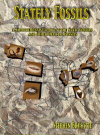
Stately Fossils
Stephen Brusatte
Stately Fossils: A Comprehensive Look at the State Fossils and Other Official Fossils, buy Stephen Brusatte. 234 pages. Publisher: Fossil News (September 2002) The only book in print on the subject of state fossils, Stately Fossils offers an in-depth treatment of the natural and cultural history behind the official fossils of every state... and more! The book contains 80 photos and over 300 references to further information.

Fossils Tell
of Long Ago
Fossils Tell of Long Ago, by Aliki. 32 pages. Publisher: Collins (March 21, 1990) Reading level: Grades Kindergarten - Grade 3. Sometimes it's the imprint of an ancient leaf in a rock. Sometimes it's a woolly mammoth, frozen for thousands of years in the icy ground. Sometimes it's the skeleton of a stegosaurus that has turned to stone.
A fossil is anything that has been preserved, one way or another, that tells about life on Earth. But you can make a fossil, too--something to be discovered a million years from now--and this book will tell you how.

Fossil
Paul Taylor
Fossil (DK Eyewitness Books), by Dr. Paul D. Taylor. 72 pages. Publisher: DK Publishing, Inc. (August 2, 2004) Reading level: Grades 4 - 7. Here is an original and exciting new look at fossils - the remains of long-vanished animals and plants. Stunning real-life photographs of the spectacular remains of ancient lives offer a unique "eyewitness" view of what fossils are, how they were formed, and how they lived millions of years ago. See pearls that are 50 million years old, a dinosaur's toe, a troublesome "snake" that was turned to stone, a fossilized human being, and a snail made of precious stones. Learn how fossils are formed, how trilobites have been preserved for 590 million years, where to look for a belemnite, and how fossils helped the pharaohs of ancient Egypt. Discover which are the most precious fossils in the world, where ammonites lived, how big mammoths were, what a devil's toenail looks like, and much, much more.
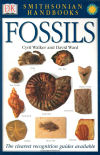
Fossils
Fossils (Smithsonian Handbooks), by Cyril Walker and David Ward. 320 pages. Publisher: DK Publishing, Inc. (May 15, 2002) Authoritative text, crystal-clear photographs, and a systematic approach make DK's Smithsonian Handbook of Fossils the most comprehensive and concise pocket guide to fossils of the world. Packed with more than 1,000 full-color photographs of over 500 fossils, this handbook is designed to cut through the complex process of identification to provide instant species recognitions.
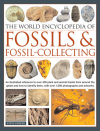
World Encyclopedia of
Fossils & Fossil-Collecting
Steve Parker
World Encyclopedia of Fossils & Fossil-Collecting, by Steve Parker. 256 pages. Publisher: Lorenz Books (December 25, 2007) Fossils can be discovered by anyone, and give us a window onto the amazing history of our planet. Ancient natural forms, from the simplest fungus to giant dinosaurs, can reveal the fascinating development of evolving life.
The main part of the book consists of an extensive directory of fossils, providing a comprehensive visual and factual compendium of more than 375 significant fossil types, ranging from the tiniest algae through mammoths and whales to giant dinosaurs such as Iguanodon - plus the varied types of human. Each and every fossil entry includes a large, full-colour photograph of the fossil itself, accompanied by a detailed factbox and a clear artwork that reconstructs the appearance of the original plant or animal. Additional feature boxes reveal fascinating related stories, such as the fossil discoveries that turned scientific thinking on its head and in-depth studies of specific fossil sites.

